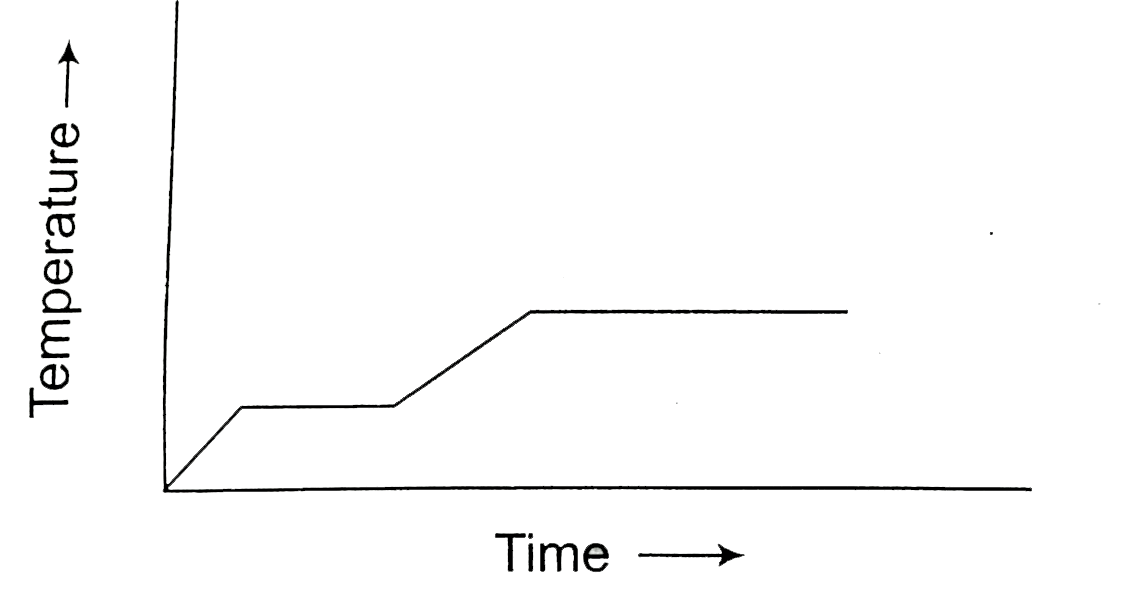Solid state and Liquid State
Topper's Solved these Questions
- MATTER IN OUR SURROUNDINGSBOOK - KUMAR PRAKASHANCHAPTER - MATTER IN OUR SURROUNDINGSEXERCISE - QUESTIONS AND ANSWERS (ANSWER THE FOLLOWING QUESTIONS IN BRIEF)
6 Videos
- MATTER IN OUR SURROUNDINGSBOOK - KUMAR PRAKASHANCHAPTER - MATTER IN OUR SURROUNDINGSEXERCISE - QUESTIONS AND ANSWERS (ANSWER THE FOLLOWING QUESTIONS IN DETAIL:)
1 Videos
- MATTER IN OUR SURROUNDINGSBOOK - KUMAR PRAKASHANCHAPTER - MATTER IN OUR SURROUNDINGSEXERCISE - QUESTIONS AND ANSWERS (MATCH THE FOLLOWING PROPERLY:)
3 Videos
- IS MATTER AROUND US PUREBOOK - KUMAR PRAKASHANCHAPTER - IS MATTER AROUND US PUREEXERCISE - QUESTIONS BASED ON PRACTICAL SKILLS WITH ANSWERS (ANSWER THE FOLLOWING AS ASKED)
8 Videos
- QUESTION PAPER 01BOOK - KUMAR PRAKASHANCHAPTER - QUESTION PAPER 01EXERCISE - SECTION - A
1 Videos
Similar Questions
(a) conversion of solid to vapours is called sublimation. Name the term used to denote the conversion of vapours to solid.
(b) Conversion of solid state to liquid state is called fusion, what is meant by latent heat of fusion ?
View SolutionThe quantity of heat required to change the unit mass of a solid substance, from solid-state to liquid state, while the temperature remains constant, is known as
View Solution
Knowledge Check
This process of changing of solid state into liquid state is called
AFusionBDiffusionCMeltingDBoth A and CA given substance of mass 'm' is in solid state at certain temperature. Arrange the following steps in proper sequence to calculate the total heat energy required to just convert the substance completely into gaseous state.
(A) Note down the specific latent heat of vapor ization of the substance and calculate the heat supplied to convert from liquid to gaseous state using the formula.
(B) Note down the melting point of the substance and calculate the heat supplied to increase the temperature of the solid to its melting point.
(C ) Note down the boiling point of the substance and calculate the heat supplied to increase the temperature of the substance from melting point to its boiling point.
(D) Add all the heat energies, it gives the resultant heat supplied to the solid to just convert it into gaseous state.
(E) Note down the specific latent heat of fusion of the substance and calculate the heat supplied to convert the substance from solid state to liquid state.AB D E C ABA C E D BCA B C D EDB E C A DA ginven substance of mass 'm' is in solid state at certain temperature. Arrange the following steps in proper sequence to calcualte the total heat energy required to just convert the substance completely into gaseous state.
(a). Note down the specific latent heat of vaporization of the substance and calculate the heat supplied to convert from liquid to gaseous state using the formula.
(b) Note down the melting point of the substance and calculate the heat supplied to increase the temperature of the solid to its melting point.
(c) Note down the boiling point of the substance and calculate the heat supplied to increase the temperature of the substance from melting point to its boiling point.
(d). Add all the heat energies, it gives the resultant hea supplied to the solid to just convert it into gaseous state.
(e) Note down the specific latent heat of fusion of the substance and calculate the heat supplied to convert the substance from solid state to liquid state.Ab d e c aBa c e d bCa b c d eDb e c a d
Compare the three states of matter in terms of size and volume. Justify the statement that liquid state is intermediate state between solid state and gaseous state.
View Solution
Heat is supplied to a certain homogeneous sample of matter, at a uniform rate. Its temperature is plotted against time, as shown Which of the following conclusions can be drawn?
(i) Its specific heat capacity is greater in the solid state than the liquid state.
(ii) Its specific heat capacity is greater in the liquid state than in the solid state.
(iii) Its latent heat of vaporization is greater than its latent heat of fusion.
(iv) Its latent heat of vaporization is smaller than its latent heat of fusion
View SolutionThe quantity of heat required to change the unit mass of a solid substance, from solid-state to liquid state, while the temperature remains constant, is known as
View Solution
Heat is supplied to a certain homogeneous sample of matter, at a uniform rate. Its temperature is plotted against time, as shown Which of the following conclusions can be drawn?
(i) Its specific heat capacity is greater in the solid state than the liquid state.
(ii) Its specific heat capacity is greater in the liquid state than in the solid state.
(iii) Its latent heat of vaporization is greater than its latent heat of fusion.
(iv) Its latent heat of vaporization is smaller than its latent heat of fusion
View SolutionAssertion : The HF−2 ion exists in the solid state & also in liquid state but not in aqueous state.
Reason : The magniture of hydrogen bonds among HF molecules is weaker than that in between HFandH2O.
View Solution

